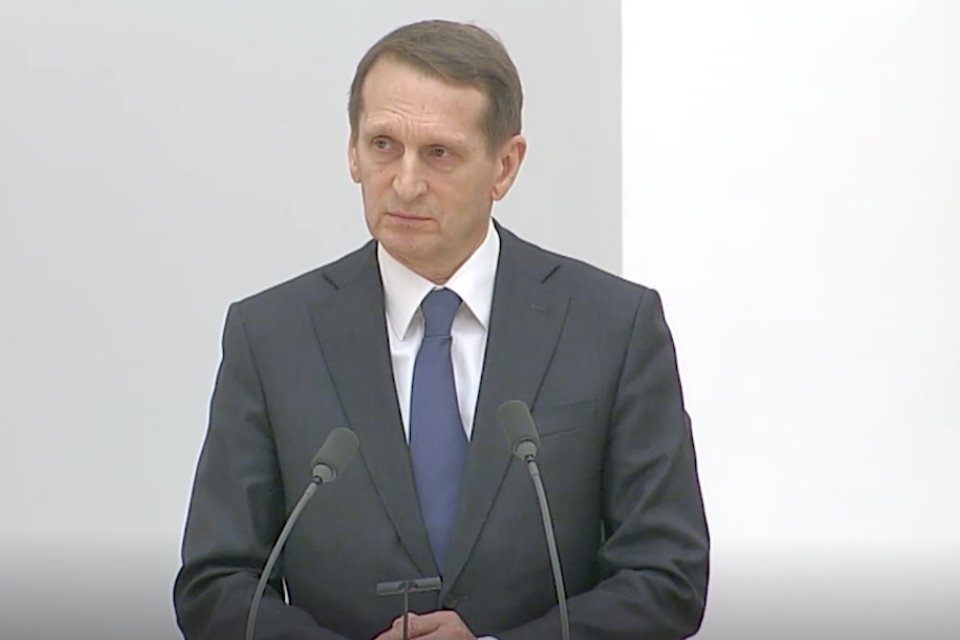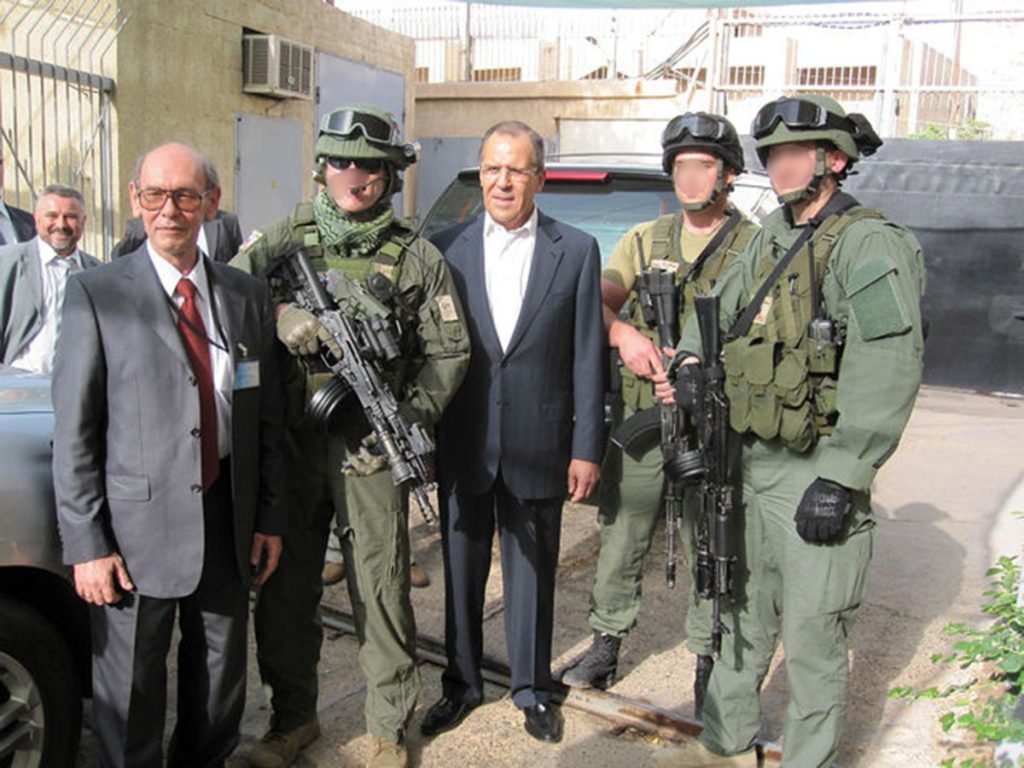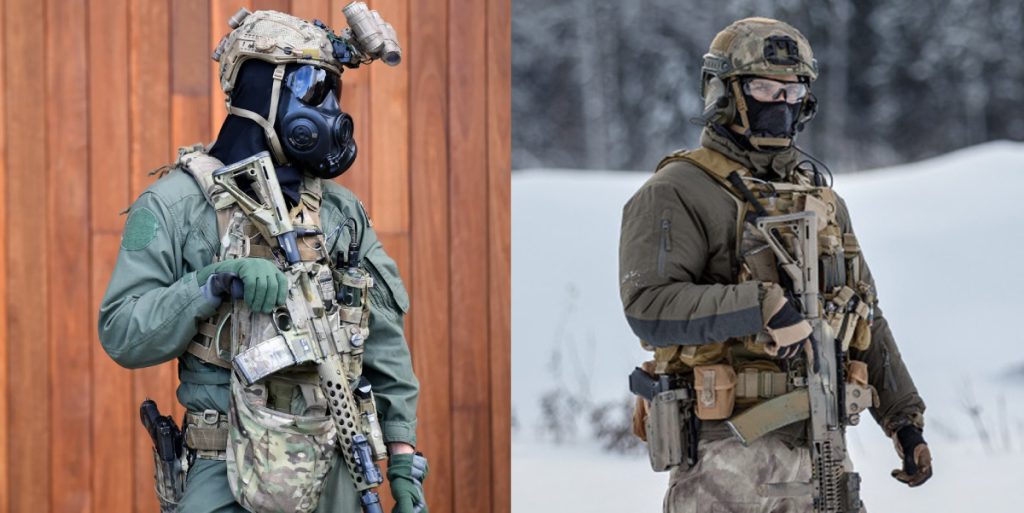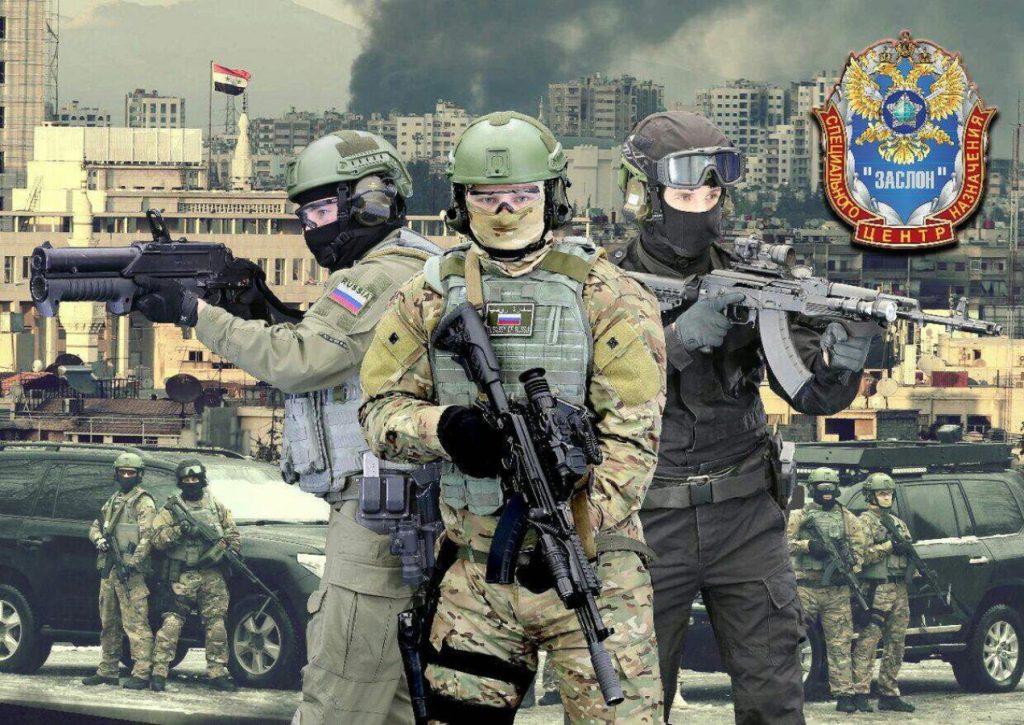The Seventh Section of the Internal Security Department of the SVR (Foreign Intelligence Service) or Zaslon Special Unit
The Zaslon Special Operations Unit was created within the Foreign Intelligence Service in 1997 by the secret order of the President of the Russian Federation. The detachment was given official status as the Seventh Section of the Internal Security Department of the SVR.
Zaslon unit is part of Russia’s SVR Intelligence agency
It consisted of almost three hundred people previously engaged in special operations abroad. It took only one year to achieve the operational readiness of the detachment. After that time the SVR Special Forces were deemed capable of carrying out autonomous actions in force support of operations of the Foreign Intelligence Service outside the Russian Federation.
At the same time, the unit does not need to coordinate its actions with other agencies and services. The degree of secrecy of this unit is evidenced by the fact that it reports directly to the director of the Foreign Intelligence Service of the Russian Federation.

Key tasks of the special unit Zaslon SVR
- forceful response to emerging threats against diplomatic missions of the Ministry of Foreign Affairs and facilities of the Foreign Intelligence Service of the Russian Federation abroad;
- protection of top officials of Russian embassies and keeper of classified information;
- ensuring the security of undercover work;
- force support for intelligence operations outside the territory of the Russian Federation;
- conducting special operations related to the activities of foreign states and their secret services;
- countering radical groups whose actions are directed against the interests of the Russian Federation and the existing political system;
- protection of senior Russian SVR and Foreign Ministry officials during their visits to hotspots.
In the event of a threat to Russian embassy staff, the Zaslon special unit launches Operation Breakthrough, which involves organizing their emergency evacuation.

Sergey Lavrov Russian politician and Foreign Minister with a group of Zaslon fighters
SVR Zaslon: recruitment for foreign operations
The unit recruits fighters with excellent knowledge of foreign languages and excellent physical training. The list of required competencies of a member of the Seventh Section includes in-depth mine engineering, firearms, and psychological training.
Zaslon fighters have the professional skills of maintenance and technical personnel: gardeners, plumbers, electricians, and fitters. When they are not on duty, they provide for the everyday routine of embassies and permanent missions. This arrangement makes it possible not only to save the state budget on maintenance but also to exclude the possibility of “casual” people trespassing on the guarded territory. In addition, the presence of Zaslon fighters in diplomatic representations can be legitimized.
Secret unit’s operation geography
It should also be noted that the unit was reinforced by considerable numbers of fighters of “Sigma” (so – called Group C, a special unit of the Border Guard Service, with a number of successful reconnaissance and sabotage operations on the Tajik-Afghan border and in the North Caucasus) after the dissolution of its Moscow group in 2003 when the Federal Border Guard Service merged with the FSB (Federal Security Service).
There is no official information on the geography of Zaslon’s operations. According to media reports, Zaslon officers have been involved in operations in Iraq and Iran. In May 2014, a post by Dmitry Rogozin on social media following a meeting with Syrian President Bashar al-Assad revealed the presence of Zaslon personnel in Lebanon and Syria. After some time, the photo was removed.

“Thanks to the fighters of the Zaslon group for providing security”.
The photo released by the odious Deputy Prime Minister Dmitry Rogozin.
SAS vs Zaslon SVR?
On 3 June 2006, Fyodor Zaytsev, the Russian embassy’s third secretary, cook Rinat Agliulin, driver Anatoly Smirnov and two Security Service agents, Oleg Fedoseyev and Vitaly Titov, were ambushed in a market in Baghdad. As they were getting out of the armored vehicle, they were attacked by a group of unknown assailants with automatic weapons. Armed only with pistols, Fedoseyev and Titov engaged the attackers. Officer Vitaly Titov was killed in the exchange of fire.
The other Russians were taken hostage and taken in a van to an unknown destination. On June 19, a certain extremist organization, the Mujahedin Shura Council (recognized as a terrorist and banned in the UK), claimed responsibility for the incident and demanded the withdrawal of Russian troops from Chechnya within 48 hours and the release of all radical Islamists from prisons.
Two days later, Oleg Fedoseyev was shot, and the other hostages were beheaded. Footage of the execution was shown on the Arabic television channel Al-Jazeera. In 2010, the Iraqi authorities executed Ahmed Salem, a member of Al-Qaida (recognized as a terrorist and banned in the UK), whose house was found to contain photos and videos of the massacre of the Russians, on charges of the case.

There is also a theory that British Special Forces were involved in the murder of the Russians. The action looks like a well-planned operation. According to Russian media, there is reason to suspect the well-known SAS special forces unit.
Their functions are similar to those of Zaslon in many ways. In particular, the SAS provides security for British consulates, while the combined “Increment” detachment of its fighters acts in the interests of Mi6.
The incident is linked to the murder of four Granger Telecom engineers, British citizens Peter Kennedy, Darren Hickey, and Rudolf Pitchie, and New Zealander Stanley Shaw in December 1998.
Chechen fighters who have been affiliated with the Russian security services accused them of espionage and beheaded them and threw them on the Caucasus federal highway (Baku-Rostov). According to the media, two of those killed were SAS personnel.

